-
 Bitcoin
Bitcoin $91,267.7899
4.91% -
 Ethereum
Ethereum $1,698.0536
7.55% -
 Tether USDt
Tether USDt $1.0008
0.08% -
 XRP
XRP $2.1556
3.71% -
 BNB
BNB $609.0535
2.18% -
 Solana
Solana $145.0560
7.22% -
 USDC
USDC $1.0001
0.01% -
 Dogecoin
Dogecoin $0.1713
8.74% -
 TRON
TRON $0.2468
1.15% -
 Cardano
Cardano $0.6554
5.57% -
 Chainlink
Chainlink $13.8250
5.91% -
 Avalanche
Avalanche $21.7000
8.07% -
 UNUS SED LEO
UNUS SED LEO $8.9828
-1.62% -
 Stellar
Stellar $0.2592
2.54% -
 Sui
Sui $2.4326
11.69% -
 Shiba Inu
Shiba Inu $0.0...01320
6.88% -
 Toncoin
Toncoin $2.9990
2.71% -
 Hedera
Hedera $0.1772
4.60% -
 Bitcoin Cash
Bitcoin Cash $357.4340
3.92% -
 Litecoin
Litecoin $82.9554
6.26% -
 Hyperliquid
Hyperliquid $18.6293
6.01% -
 Polkadot
Polkadot $3.9012
1.96% -
 Dai
Dai $1.0000
0.01% -
 Bitget Token
Bitget Token $4.5213
2.02% -
 Ethena USDe
Ethena USDe $0.9997
0.04% -
 Pi
Pi $0.6393
1.13% -
 Monero
Monero $222.4871
3.20% -
 Pepe
Pepe $0.0...08430
8.45% -
 Uniswap
Uniswap $5.6188
6.43% -
 Aptos
Aptos $5.1020
2.23%
How does Ethereum spot trading deal with price fluctuations?
Ethereum's spot trading exposes users to inherent price volatility, but employing strategies like limit orders, stop-loss orders, and diversification, alongside technical and fundamental analysis, can mitigate risks and enhance returns.
Feb 27, 2025 at 08:06 pm
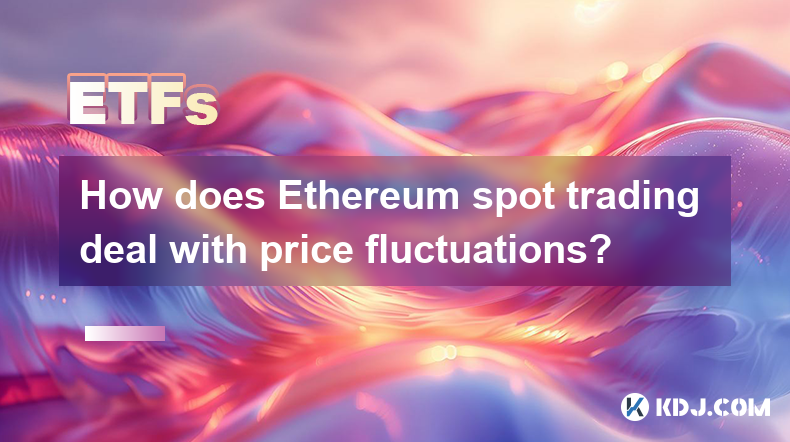
How Does Ethereum Spot Trading Deal with Price Fluctuations?
Key Points:
- Ethereum's price volatility is inherent to its nature as a cryptocurrency. Spot trading, by its very definition, exposes traders directly to this volatility. However, several strategies and tools can mitigate risk.
- Understanding order types (market orders, limit orders, stop-loss orders) is crucial for managing risk and capitalizing on price movements.
- Leverage, while offering amplified returns, significantly increases risk. Careful consideration of leverage levels and risk management strategies is paramount.
- Utilizing technical analysis, fundamental analysis, and risk management techniques are essential for navigating price fluctuations effectively.
- Diversification across various assets and trading strategies can help reduce overall portfolio volatility.
Understanding Ethereum Spot Trading and Price Volatility
- The Nature of Cryptocurrency Markets: Unlike traditional financial markets with established regulatory frameworks and inherent stability, the cryptocurrency market is characterized by high volatility. Several factors contribute to this: decentralized nature, speculative trading, regulatory uncertainty, technological developments, and market sentiment. Ethereum, as a leading cryptocurrency, is particularly susceptible to these influences. Its price can fluctuate significantly within short periods due to news events (e.g., network upgrades, regulatory announcements, adoption by major institutions), market sentiment (fear, uncertainty, and doubt – FUD, or greed), and trading volume. Spot trading, involving the immediate exchange of Ethereum for another currency (usually fiat or stablecoins), exposes traders directly to this inherent price volatility. Understanding this volatility is the first step towards effectively managing risk in Ethereum spot trading. The decentralized nature means there's no central authority to control price swings, leading to heightened sensitivity to market forces. Speculative trading, driven by the potential for substantial profits, can create price bubbles and subsequent crashes. Regulatory uncertainty adds another layer of risk, as changes in regulations can significantly impact the price of Ethereum. Technological advancements within the Ethereum ecosystem can also lead to price fluctuations, both positive and negative, as improvements and innovations impact the overall value proposition. Finally, market sentiment plays a crucial role; periods of high optimism can drive prices up, while fear and uncertainty can lead to sharp declines. This volatile nature is not something that can be eliminated, but its impact can be significantly mitigated through proper risk management strategies.
- Order Types and Their Role in Managing Volatility: Different order types offer varying degrees of control over your trades in the face of price fluctuations. Market orders, which execute immediately at the best available price, are straightforward but offer no control over the price at which your trade is executed. In volatile markets, this can lead to significant slippage (the difference between the expected price and the actual execution price). Limit orders, on the other hand, allow you to specify the price at which you are willing to buy or sell. This gives you greater control over your execution price but carries the risk that your order may not be filled if the price doesn't reach your specified level. Stop-loss orders are designed to limit potential losses. They automatically sell your Ethereum if the price falls below a predetermined level, preventing further losses from accumulating during a rapid price decline. Understanding and strategically utilizing these order types is fundamental to mitigating risk and managing exposure to price fluctuations. The choice of order type should be tailored to your trading strategy and risk tolerance. Aggressive traders might favor market orders for speed, while more conservative traders might prefer limit orders or stop-loss orders to control their risk. Understanding how to use these orders effectively is a crucial aspect of successful Ethereum spot trading. Stop-limit orders combine the features of both stop-loss and limit orders, offering a more nuanced approach to managing risk.
- Leverage: Amplifying Returns and Risks: Leverage allows traders to control a larger position with a smaller amount of capital. While it can amplify potential profits, it also significantly magnifies potential losses. Using leverage in a volatile market like Ethereum can lead to substantial losses if the market moves against your position. For example, a 10x leverage on a short position will multiply your profits if the price goes down, but will also multiply your losses if the price goes up. Therefore, understanding and managing leverage is crucial. Traders should carefully assess their risk tolerance and only use leverage if they are comfortable with the potential for substantial losses. Risk management techniques such as setting stop-loss orders and diversifying positions are especially important when using leverage. Proper position sizing is also critical to prevent liquidation, where your position is automatically closed due to reaching a predetermined margin level. Over-leveraging is a common mistake among inexperienced traders, leading to significant financial losses. The appropriate level of leverage depends on individual circumstances, risk appetite, and trading strategy. It’s essential to understand that higher leverage doesn’t necessarily equate to higher profits; it increases both the potential for profits and losses exponentially.
- Technical and Fundamental Analysis in Ethereum Spot Trading: Technical analysis involves studying price charts and indicators to identify patterns and predict future price movements. Fundamental analysis focuses on evaluating the underlying value of Ethereum based on factors such as adoption rates, network upgrades, and market sentiment. Combining both approaches can provide a more comprehensive understanding of the market and help in making informed trading decisions. Technical indicators such as moving averages, relative strength index (RSI), and MACD can help identify potential buy and sell signals, but they are not foolproof. Fundamental factors such as network upgrades, regulatory developments, and adoption by major institutions can significantly impact Ethereum's price. Analyzing both technical and fundamental factors helps in developing a well-rounded trading strategy that considers both short-term price fluctuations and long-term value. However, it's important to remember that neither technical nor fundamental analysis guarantees accurate predictions. Market sentiment and unexpected events can significantly influence price movements, irrespective of technical or fundamental indicators.
- Diversification and Risk Management Strategies: Diversification is a key risk management technique that involves spreading your investments across different assets and trading strategies. Instead of focusing solely on Ethereum spot trading, consider diversifying into other cryptocurrencies, traditional assets, or even different trading strategies like futures or options. This reduces your overall portfolio volatility and minimizes the impact of any single asset's price fluctuations. Furthermore, implementing effective risk management strategies, such as setting stop-loss orders, using trailing stops, and controlling position size, is crucial. Understanding your risk tolerance and adjusting your trading strategy accordingly is essential. Risk management is not about avoiding losses entirely, but about managing them effectively and preventing catastrophic losses that could wipe out your trading capital. Diversification helps reduce the impact of negative events, while appropriate risk management strategies minimize the potential for significant losses from individual trades. The combination of both approaches forms the cornerstone of a robust and sustainable trading strategy. It’s crucial to regularly review and adjust your risk management strategy based on market conditions and your trading experience.
FAQs
Q: How can I protect myself from significant losses during extreme Ethereum price volatility?
A: Several strategies can help mitigate losses during extreme price volatility. Firstly, utilize stop-loss orders to automatically sell your Ethereum if the price drops below a predetermined level. Secondly, avoid excessive leverage, as it amplifies both profits and losses. Thirdly, diversify your portfolio across different assets to reduce your overall risk exposure. Finally, stay informed about market news and events that could impact Ethereum's price, allowing you to adjust your positions accordingly.
Q: What are the best indicators for predicting Ethereum price movements?
A: No single indicator guarantees accurate price predictions. However, a combination of technical indicators (like moving averages, RSI, MACD) and fundamental analysis (considering network upgrades, adoption rates, and regulatory developments) can provide a more holistic view. Remember that even with thorough analysis, market sentiment and unexpected events can significantly influence price movements.
Q: Is spot trading suitable for all investors?
A: Spot trading is suitable for investors who understand and accept the inherent risks associated with cryptocurrency market volatility. It's not recommended for risk-averse investors or those who lack a solid understanding of cryptocurrency markets and trading strategies. Beginners should start with small amounts of capital and gradually increase their investment as they gain experience and confidence.
Q: What is the difference between spot trading and futures trading for Ethereum?
A: Spot trading involves the immediate exchange of Ethereum for another currency at the current market price. Futures trading involves agreeing to buy or sell Ethereum at a specific price on a future date. Futures trading allows for hedging against price fluctuations but introduces additional complexities and risks.
Q: How can I learn more about effective Ethereum spot trading strategies?
A: Numerous online resources, including educational websites, trading platforms, and books, provide information on Ethereum spot trading strategies. However, it's crucial to approach these resources critically and to conduct thorough research before implementing any trading strategy. Consider seeking guidance from experienced traders or financial advisors. Remember that consistent learning and adapting to market conditions are essential for long-term success in cryptocurrency trading.
Disclaimer:info@kdj.com
The information provided is not trading advice. kdj.com does not assume any responsibility for any investments made based on the information provided in this article. Cryptocurrencies are highly volatile and it is highly recommended that you invest with caution after thorough research!
If you believe that the content used on this website infringes your copyright, please contact us immediately (info@kdj.com) and we will delete it promptly.
- How Much Could $2,000 in Ripple (XRP) Be Worth at the Peak of the Bull Run?
- 2025-04-23 02:00:20
- Mind of Pepe (MIND) Token Presale Sells Out Ahead of Listing, Promises AI-Powered Meme Coin Experience
- 2025-04-23 02:00:20
- Galaxy Digital Moves $105M Worth of Ethereum to Solana
- 2025-04-23 01:55:12
- A major whale has made a significant move in the Mantra (OM) market
- 2025-04-23 01:55:12
- World of Women (WoW) Prepares to Enchant the World Once Again with its Flagship Event: the WoW Gala Lisboa
- 2025-04-23 01:50:12
- Onyxcoin (XCN) Has Plunged by 15% in the Past Week and Is Poised to Extend Its Decline as Selloffs Strengthen
- 2025-04-23 01:50:12
Related knowledge
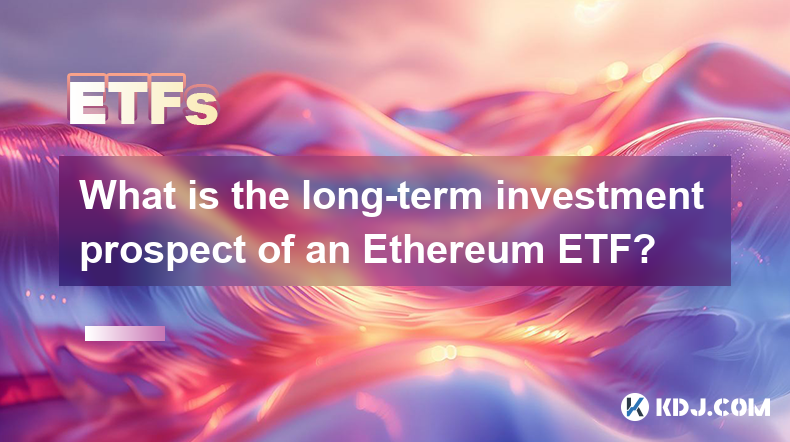
What is the long-term investment prospect of an Ethereum ETF?
Mar 18,2025 at 03:01pm
Key Points:Uncertainty surrounds the long-term prospects of an Ethereum ETF due to regulatory hurdles and market volatility.Approval hinges on regulatory clarity regarding cryptocurrencies, especially concerning investor protection and market manipulation.Successful ETF launches could boost Ethereum's price and adoption, but failure could negatively imp...
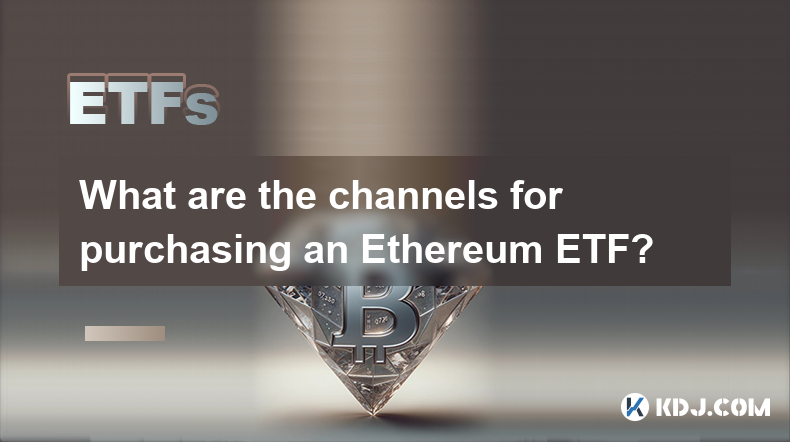
What are the channels for purchasing an Ethereum ETF?
Mar 18,2025 at 01:49am
Key Points:Currently, there are no Ethereum ETFs available for direct purchase by the general public in most major markets.Access to Ethereum exposure through ETFs is limited, mainly through futures-based ETFs.Purchasing Ethereum directly or through other investment vehicles remains a viable alternative.Regulatory hurdles and market complexities signifi...
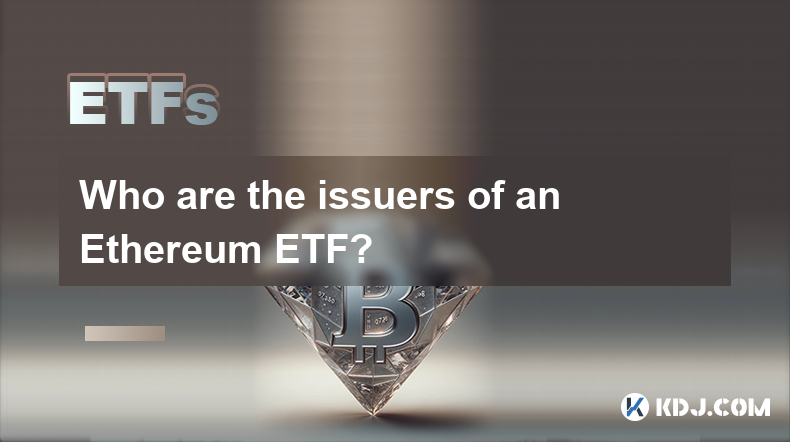
Who are the issuers of an Ethereum ETF?
Mar 19,2025 at 08:07pm
Key Points:There are no currently approved Ethereum ETFs in the US, meaning no single issuer can be definitively named. However, several firms have filed applications.The issuers of potential Ethereum ETFs will be large, established financial institutions, typically asset management companies.The specific requirements for ETF issuers are stringent and o...
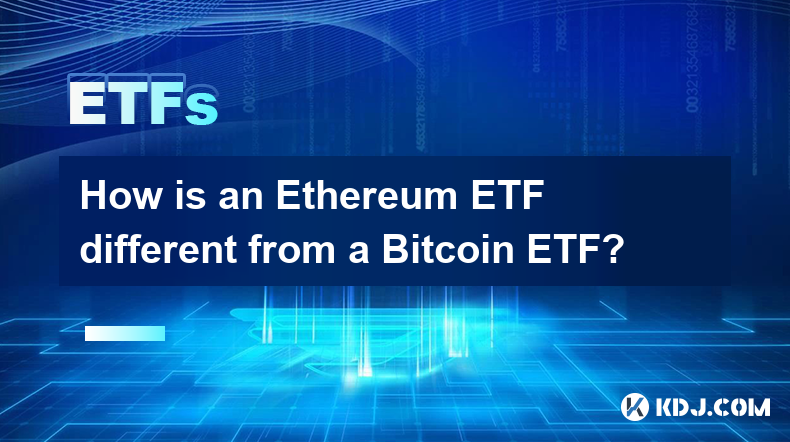
How is an Ethereum ETF different from a Bitcoin ETF?
Mar 17,2025 at 10:55am
Key Points:Underlying Asset: The core difference lies in the underlying asset: an Ethereum ETF tracks the price of Ether (ETH), while a Bitcoin ETF tracks the price of Bitcoin (BTC).Technology and Use Cases: Ethereum's blockchain supports smart contracts and decentralized applications (dApps), creating a distinct technological and investment narrative c...
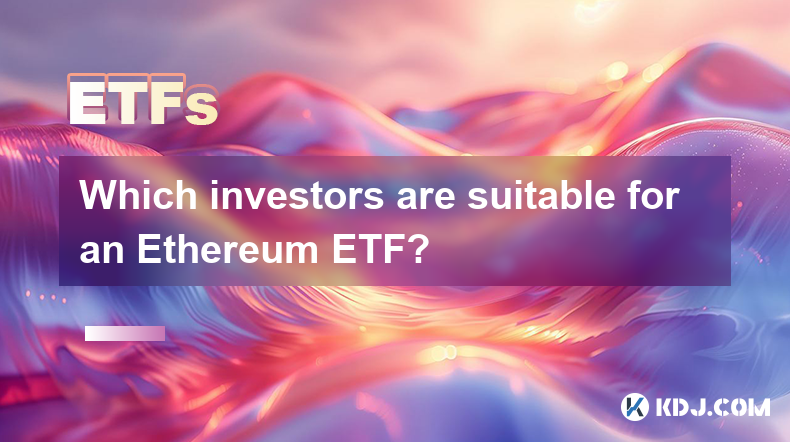
Which investors are suitable for an Ethereum ETF?
Mar 16,2025 at 05:50pm
Key Points:Risk Tolerance: Ethereum ETF investment requires a high risk tolerance due to the volatility of the cryptocurrency market.Investment Goals: Investors seeking long-term growth potential and exposure to the Ethereum ecosystem are suitable candidates.Investment Horizon: A longer-term investment horizon is crucial to weather market fluctuations.U...
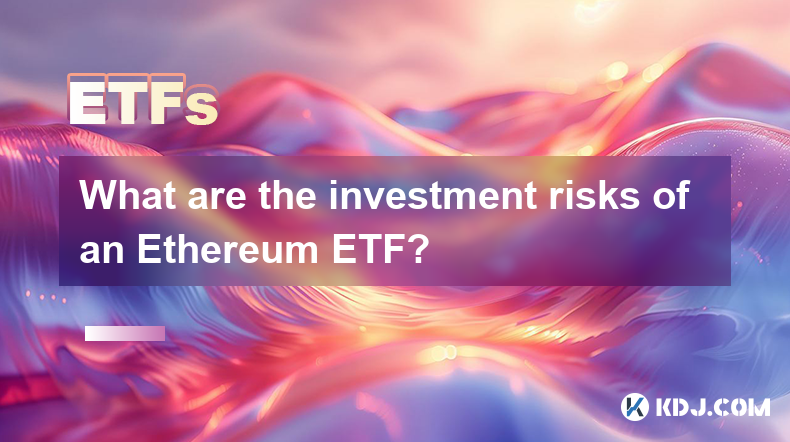
What are the investment risks of an Ethereum ETF?
Mar 18,2025 at 02:12am
Key Points:Price Volatility: Ethereum's price is highly volatile, impacting ETF share prices.Regulatory Uncertainty: Changes in regulatory landscapes can significantly affect ETF trading and performance.Market Manipulation: The potential for market manipulation, particularly in smaller ETFs, exists.Underlying Asset Risk: Risks associated with the Ethere...

What is the long-term investment prospect of an Ethereum ETF?
Mar 18,2025 at 03:01pm
Key Points:Uncertainty surrounds the long-term prospects of an Ethereum ETF due to regulatory hurdles and market volatility.Approval hinges on regulatory clarity regarding cryptocurrencies, especially concerning investor protection and market manipulation.Successful ETF launches could boost Ethereum's price and adoption, but failure could negatively imp...

What are the channels for purchasing an Ethereum ETF?
Mar 18,2025 at 01:49am
Key Points:Currently, there are no Ethereum ETFs available for direct purchase by the general public in most major markets.Access to Ethereum exposure through ETFs is limited, mainly through futures-based ETFs.Purchasing Ethereum directly or through other investment vehicles remains a viable alternative.Regulatory hurdles and market complexities signifi...

Who are the issuers of an Ethereum ETF?
Mar 19,2025 at 08:07pm
Key Points:There are no currently approved Ethereum ETFs in the US, meaning no single issuer can be definitively named. However, several firms have filed applications.The issuers of potential Ethereum ETFs will be large, established financial institutions, typically asset management companies.The specific requirements for ETF issuers are stringent and o...

How is an Ethereum ETF different from a Bitcoin ETF?
Mar 17,2025 at 10:55am
Key Points:Underlying Asset: The core difference lies in the underlying asset: an Ethereum ETF tracks the price of Ether (ETH), while a Bitcoin ETF tracks the price of Bitcoin (BTC).Technology and Use Cases: Ethereum's blockchain supports smart contracts and decentralized applications (dApps), creating a distinct technological and investment narrative c...

Which investors are suitable for an Ethereum ETF?
Mar 16,2025 at 05:50pm
Key Points:Risk Tolerance: Ethereum ETF investment requires a high risk tolerance due to the volatility of the cryptocurrency market.Investment Goals: Investors seeking long-term growth potential and exposure to the Ethereum ecosystem are suitable candidates.Investment Horizon: A longer-term investment horizon is crucial to weather market fluctuations.U...

What are the investment risks of an Ethereum ETF?
Mar 18,2025 at 02:12am
Key Points:Price Volatility: Ethereum's price is highly volatile, impacting ETF share prices.Regulatory Uncertainty: Changes in regulatory landscapes can significantly affect ETF trading and performance.Market Manipulation: The potential for market manipulation, particularly in smaller ETFs, exists.Underlying Asset Risk: Risks associated with the Ethere...
See all articles























































































